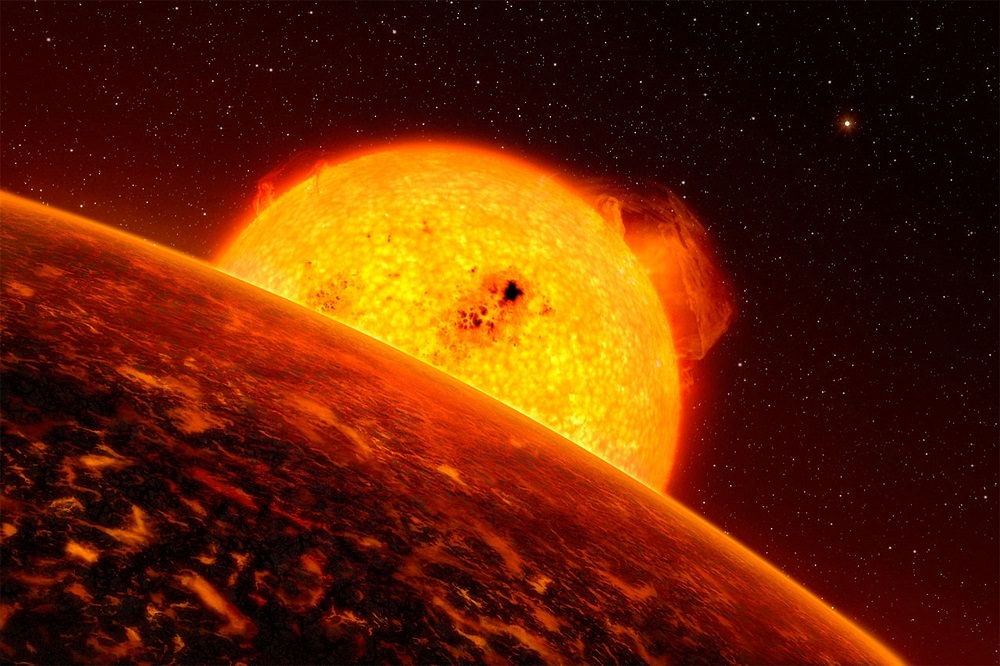On April 18th, 2018, NASA’s Transitting Exoplanet Survey Satellite (TESS) took to space for the first time. By August, it began capturing the light curves of distant stars for signs of planetary transits, effectively picking up where the Kepler Space Telescope left off. Now, just a few months away from the end of its primary mission, NASA has put a year’s worth of images of the southern sky together to create the beautiful mosaic you see here.
Continue reading “TESS Has Now Captured Almost the Entire Southern Sky. Here’s a Mosaic Made of 15,347 Photographs”NASA Promised More Smaller, Earth-size Exoplanets. TESS is Delivering.
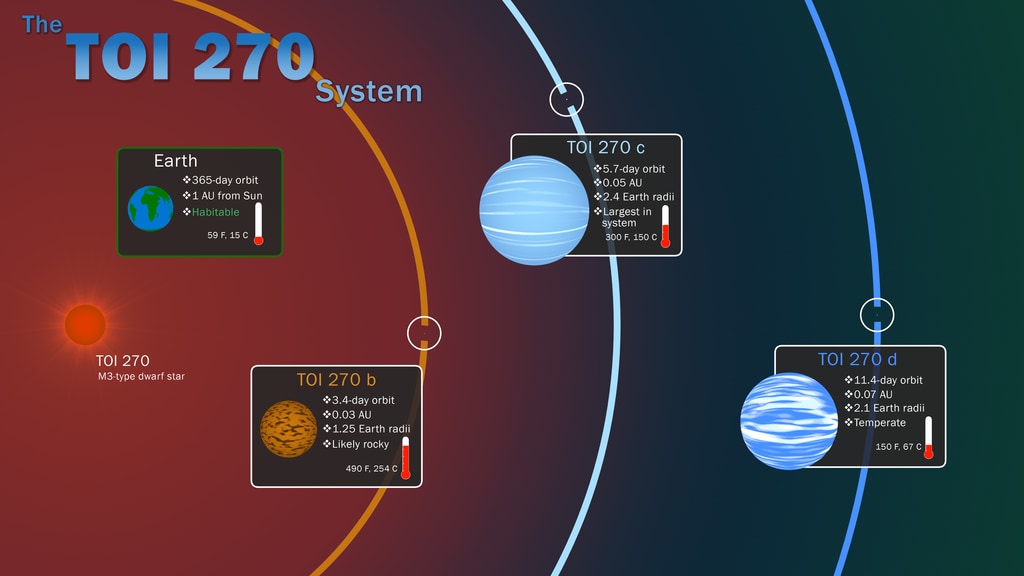
When NASA launched TESS (Transiting Exoplanet Survey Satellite) in 2018, it had a specific goal. While its predecessor, the Kepler spacecraft, found thousands of exoplanets, many of them were massive gas giants. TESS was sent into space with a promise: to find smaller planets similar in size to Earth and Neptune, orbiting stable stars without much flaring. Those constraints, astronomers hoped, would identify more exoplanets that are potentially habitable.
With this discovery of three new exoplanets, TESS is fulfilling its promise.
Continue reading “NASA Promised More Smaller, Earth-size Exoplanets. TESS is Delivering.”TESS Just Found its First Earth-Sized World

NASA’s new planet-hunting telescope, TESS (Transiting Exoplanet Survey Satellite), just found its first Earth-sized world. Though the Earth-sized planet, and its hot sub-Neptune companion, were first observed by TESS in January 2019, it’s taken until now to confirm their status with ground-based follow-up observations. The discovery is published in The Astrophysical Journal Letters.
Continue reading “TESS Just Found its First Earth-Sized World”Now that TESS is Operational, Astronomers Estimate it’ll Find 14,000 Planets. 10 Could Be Earthlike Worlds in a Sunlike Star’s Habitable Zone

How many exoplanets are there? Not that long ago, we didn’t know if there were any. Then we detected a few around pulsars. Then the Kepler spacecraft was launched and it discovered a couple thousand more. Now NASA’s TESS (Transiting Exoplanet Survey Satellite) is operational, and a new study predicts its findings.
It’s Over For Kepler. The Most Successful Planet Hunter Ever Built is Finally out of Fuel and Has Just Been Shut Down.
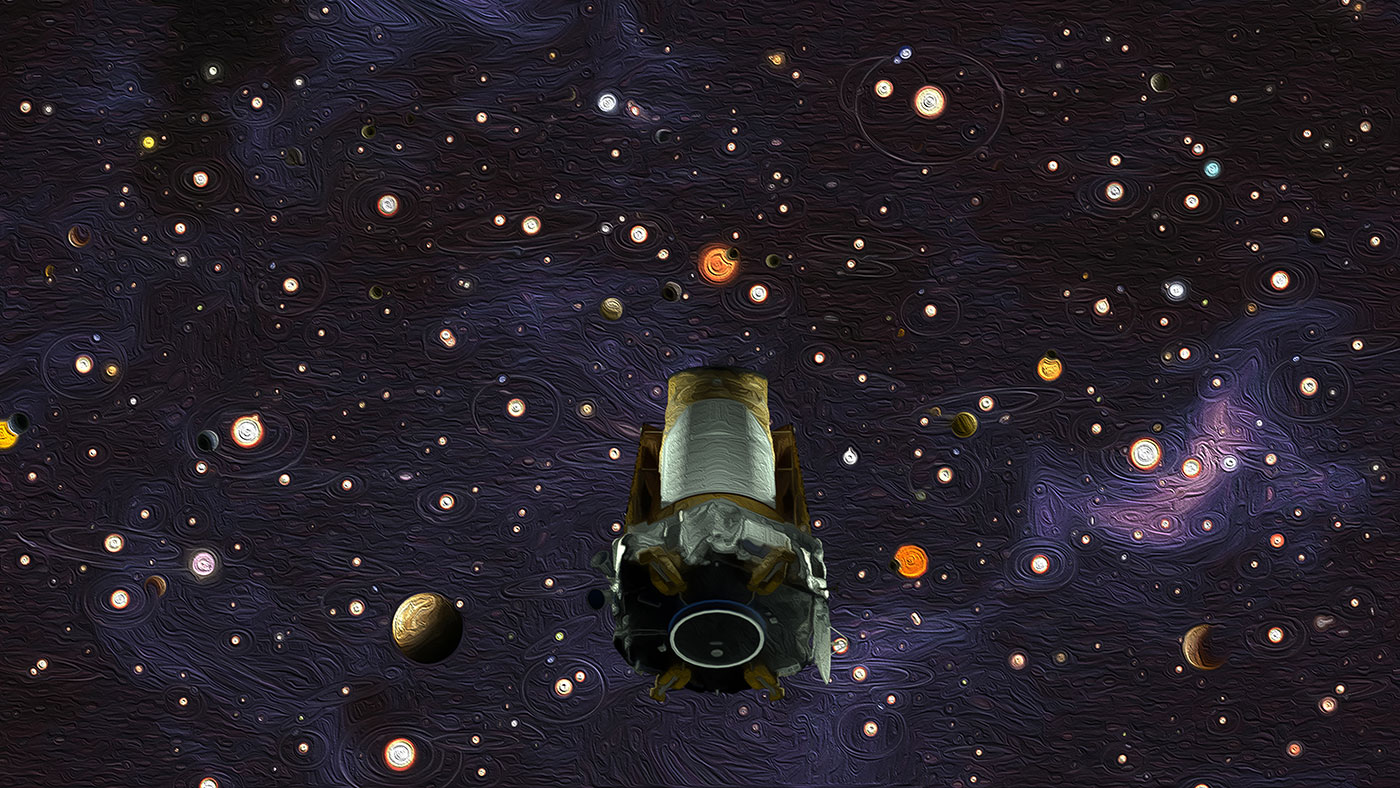
It’s been quite a tumultuous time for space telescopes lately! Less than a month ago, the Hubble Space Telescope went into safe mode after experiencing a mechanical failure with one of its gyroscopes (which has since been remedied). Shortly thereafter, the Chandra X-ray telescope went into safe mode as well, and for similar reasons. After three days, it’s operations team managed to get it back in working order as well.
And now, after nine years of service, NASA has officially announced that the Kepler Space Telescope will be retiring. With no fuel remaining to conduct its science observations, NASA has decided to leave the telescope in its current safe orbit (well away from Earth). Far from being a sad occasion, Kepler’s retirement is an opportunity to reflect upon the immense accomplishments of this telescope and how it revolutionized the study of exoplanets.
TESS Practices on a Comet Before Starting on its Science Operations

On April 18th, 2018, NASA deployed the Transiting Exoplanet Survey Satellite (TESS), a next-generation exoplanet hunting telescope that is expected to find thousands of planets in the coming years. Alongside other next-generation telescopes like the James Webb Space Telescope (JWST), TESS will effectively pick up where space telescopes like Hubble and Kepler left off.
The mission recently started science operations (on July 25th, 2018) and is expected to transmit its first collection of data back to Earth this month. But before that, the planet-hunting telescope took a series of images that featured a recently-discovered comet known as C/2018 N1. These images helped demonstrate the satellite’s ability to collect images over a broad region of the sky – which will be critical when it comes to finding exoplanets.
As the name would suggest, the TESS mission is designed to search for planets around distant stars using the Transit Method (aka. Transit Photometry). For this method, distant stars are monitored for periodic dips in brightness, which are indications that a planet is passing in front of the star (aka. transiting) relative to the observer. From these dips, astronomers are able to estimate a planet’s size and orbital period.
This method remains the most effective and popular means for finding exoplanets, accounting for 2,951 of the 3,774 confirmed discoveries made to date. To test its instruments before it began science operations, TESS took images of C/2018 N1 over a short period near the end of the mission’s commissioning phase – which occurred over the course of 17 hours on July 25th.
The comet that it managed to capture, C/2018 N1, was discovered by NASA’s Near-Earth Object Wide-field Infrared Survey Explorer (NEOWISE) satellite on June 29th. This comet is located about 48 million km (29 million mi) from Earth in the southern constellation Piscis Austrinus. In these pictures, which were compiled into a video (shown below), the comet is seen as a bright dot against a background of stars and other objects.
As it moves across the frame (from right to left), the comet’s tail can be seen extending to the top of the frame, and gradually changes direction as the comet glides across the field of view. The images also reveal a considerable amount of astronomical activity in the background. For instance, image processing causes the stars to shift between white and black, which highlights some variable stars visible in the images.
These are stars that change brightness as a result of pulsation, rapid rotation, or being eclipsed by a binary neighbor. A number of Solar System asteroids are also visible as small white dots moving across the field of view. Last, but not least, some stray light that was reflected from Mars is also visible near the end of the video. This light appears as a faint broad arc that moves across the middle section of the frame, from left to right.
This effect was due to the fact that Mars was at its brightest at the time since it was near opposition (i.e. at the closest point in its orbit to Earth). These images showcase the capabilities of the TESS mission, even though they only show a fraction of the instrument’s active field of view.
In the coming weeks and months, TESS science team will continue to fine-tune the spacecraft’s performance as it searches for extra-solar planets. As noted, it is expected that TESS will find thousands of planets in our galaxy, vastly increasing our knowledge of exoplanets and the kinds of worlds that exist beyond our Solar System!
And be sure to check out the video of the images TESS captured, courtesy of NASA’s Goddard Space Flight Center:
Further Reading: NASA
Kepler Mission Placed in Hibernation to Download Data Before its Last Campaign
The Kepler space telescope has had a relatively brief but distinguished career of service with NASA. Having launched in 2009, the space telescope has spent the past nine years observing distant stars for signs of planetary transits (i.e. the Transit Method). In that time, it has been responsible for the detection of 2,650 confirmed exoplanets, which constitutes the majority of the more than 38oo planets discovered so far.
Earlier this week, the Kepler team was notified that the space telescope’s fuel tank is running very low. NASA responded by placing the spacecraft in hibernation in preparation for a download of its scientific data, which it collected during its latest observation campaign. Once the data is downloaded, the team expects to start its last observation campaign using whatever fuel it has left.
Since 2013, Kepler has been conducting its “Second Light” (aka. K2) campaign, where the telescope has continued conducting observations despite the loss of two of its reaction wheels. Since May 12th, 2018, Kepler has been on its 18th observation campaign, which has consisted of it studying a patch of sky in the vicinity of the Cancer constellation – which it previously studied in 2015.
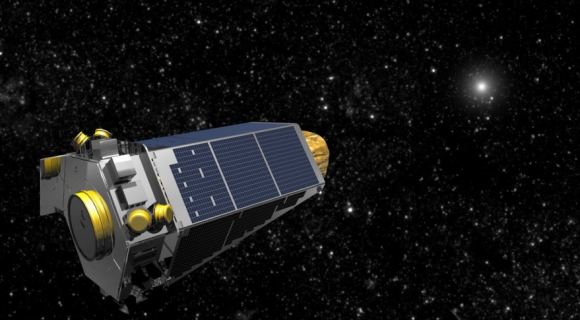
In order to send the data back home, the spacecraft will point is large antenna back towards Earth and transmit it via the Deep Space Network. However, the DSN is responsible for transmitting data from multiple missions and time needs to be allotted in advance. Kepler is scheduled to send data from its 18th campaign back in August, and will remain in a stable orbit and safe mode in order to conserve fuel until then.
On August 2nd, the Kepler team will command the spacecraft to awaken and will maneuver the craft to the correct orientation to transmit the data. If all goes well, they will begin Kepler’s 19th observation campaign on August 6th with what fuel the spacecraft still has. At present, NASA expects that the spacecraft will run out of fuel in the next few months.
However, even after the Kepler mission ends, scientists and engineers will continue to mine the data that has already been sent back for discoveries. According to a recent study by an international team of scientists, 24 new exoplanets were discovered using data from the 10th observation campaign, which has brought the total number of Kepler discoveries to 2,650 confirmed exoplanets.
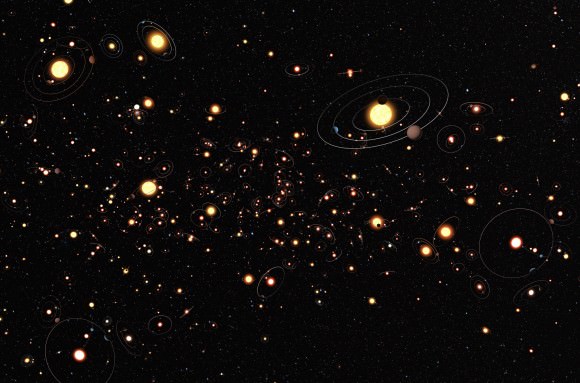
In the coming years, many more exoplanet discoveries are anticipated as the next-generation of space telescopes begin collecting their first light or are deployed to space. These include the Transiting Exoplanet Survey Satellite (TESS), which launched this past April, and the James Webb Space Telescope (JWST) – which is currently scheduled to launch sometime in 2021.
However, it will be many years before any mission can rival the accomplishments and contributions made by Kepler! Long after she is retired, her legacy will live on in the form of her discoveries.
Further Reading: NASA
Kepler’s Almost Out of Fuel. It’ll Make its Last Observation in a Few Months
Since its deployment in March of 2009, the Kepler space telescope has been a boon for exoplanet-hunters. As of March 8th, 2018, a total of 3,743 exoplanets have been confirmed, 2,649 of which were discovered by Kepler alone. At the same time, the telescope has suffered its share of technical challenges. These include the failure of two reaction wheels, which severely hampered the telescope’s ability to conduct its original mission.
Nevertheless, the Kepler team was able to return the telescope to a stable configuration by using small amounts of thruster fuel to compensate for the failed reaction wheels. Unfortunately, after almost four years conducting its K2 observation campaign, the Kepler telescope is now running out fuel. Based on its remaining fuel and rate of consumption, NASA estimates that the telescope’s mission will end in a few months.
For years, the Kepler space telescope has been locating planets around distant stars using the Transit Method (aka. Transit Photometry). This consists of monitors stars for periodic dips in brightness, which are caused by a planet passing in front of the star (i.e. transiting). Of all the methods used to hunt for exoplanets, the Transit Method is considered the most reliable, accounting for a total of 2900 discoveries.
Naturally, this news comes as a disappointment to astronomers and exoplanet enthusiasts. But before anyone starts lamenting the situation, they should keep some things in mind. For one, the Kepler mission has managed to last longer than anyone expected. Ever since the K2 campaign began, the telescope has been required to shift its field of view about every three months to conduct a new observation campaign.
Based on their original estimates, the Kepler team believed they had enough fuel to conduct 10 more campaigns. However, the mission has already completed 16 campaigns and the team just began their 17th. As Charlie Sobeck, a system engineer for the Kepler space telescope mission, explained in a recent NASA press statement:
“Our current estimates are that Kepler’s tank will run dry within several months – but we’ve been surprised by its performance before! So, while we anticipate flight operations ending soon, we are prepared to continue as long as the fuel allows. The Kepler team is planning to collect as much science data as possible in its remaining time and beam it back to Earth before the loss of the fuel-powered thrusters means that we can’t aim the spacecraft for data transfer. We even have plans to take some final calibration data with the last bit of fuel, if the opportunity presents itself.”
So while the mission is due to end soon, the science team hopes to gather as much scientific data as possible and beam it back to Earth before then. They also hope to gather some final calibration data using the telescope’s last bit of fuel, should the opportunity present itself. And since they cannot refuel the spacecraft, they hope to stop collecting data so they can use their last bit of fuel to point the spacecraft back towards Earth and bring it home.

“Without a gas gauge, we have been monitoring the spacecraft for warning signs of low fuel— such as a drop in the fuel tank’s pressure and changes in the performance of the thrusters,” said Sobeck. “But in the end, we only have an estimate – not precise knowledge. Taking these measurements helps us decide how long we can comfortably keep collecting scientific data.”
This has been standard practice for many NASA missions, where enough fuel has been reserved to conduct one last maneuver. For example, the Cassini mission had to reserve fuel in order to descend into Saturn’s atmosphere so it would avoid colliding with one of its moons and contaminating a potentially life-bearing environment. Satellites also regularly conduct final maneuvers to ensure they don’t crash into other satellites or fall to Earth.
While deep-space missions like Kepler are in no danger of crashing to Earth or contaminating a sensitive environment, this final maneuver is designed to ensure that the science team can squeeze every last drop of data from the spacecraft. So before the mission wraps up, we can expect that this venerated planet-hunter will have some final surprises for us!
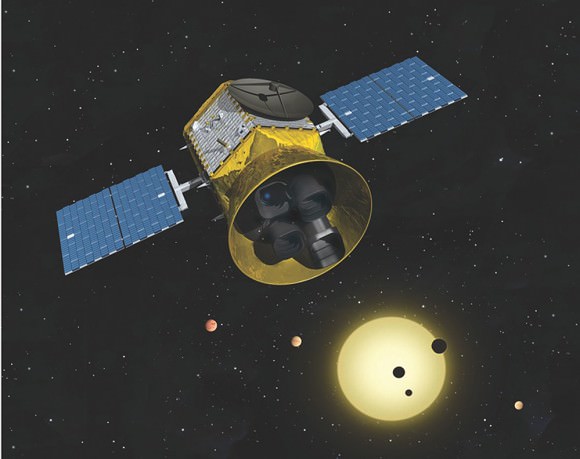
In the coming years, next-generation telescopes will be taking to space to pick up where Kepler and other space telescopes left off. These include the Transiting Exoplanet Survey Satellite (TESS), which will be conducting Transit surveys shortly after it launches in April of 2018. By 2019, the James Webb Space Telescope (JWST) will also take to space and use its powerful infrared instruments to aid in the hunt for exoplanets.
So while we will soon be saying goodbye to the Kepler mission, its legacy will live on. In truth, the days of exoplanet discovery are just getting started!
Stay tuned for updates from the Kepler and K2 Science Center.
Further Reading: NASA
What is the Transit Method?
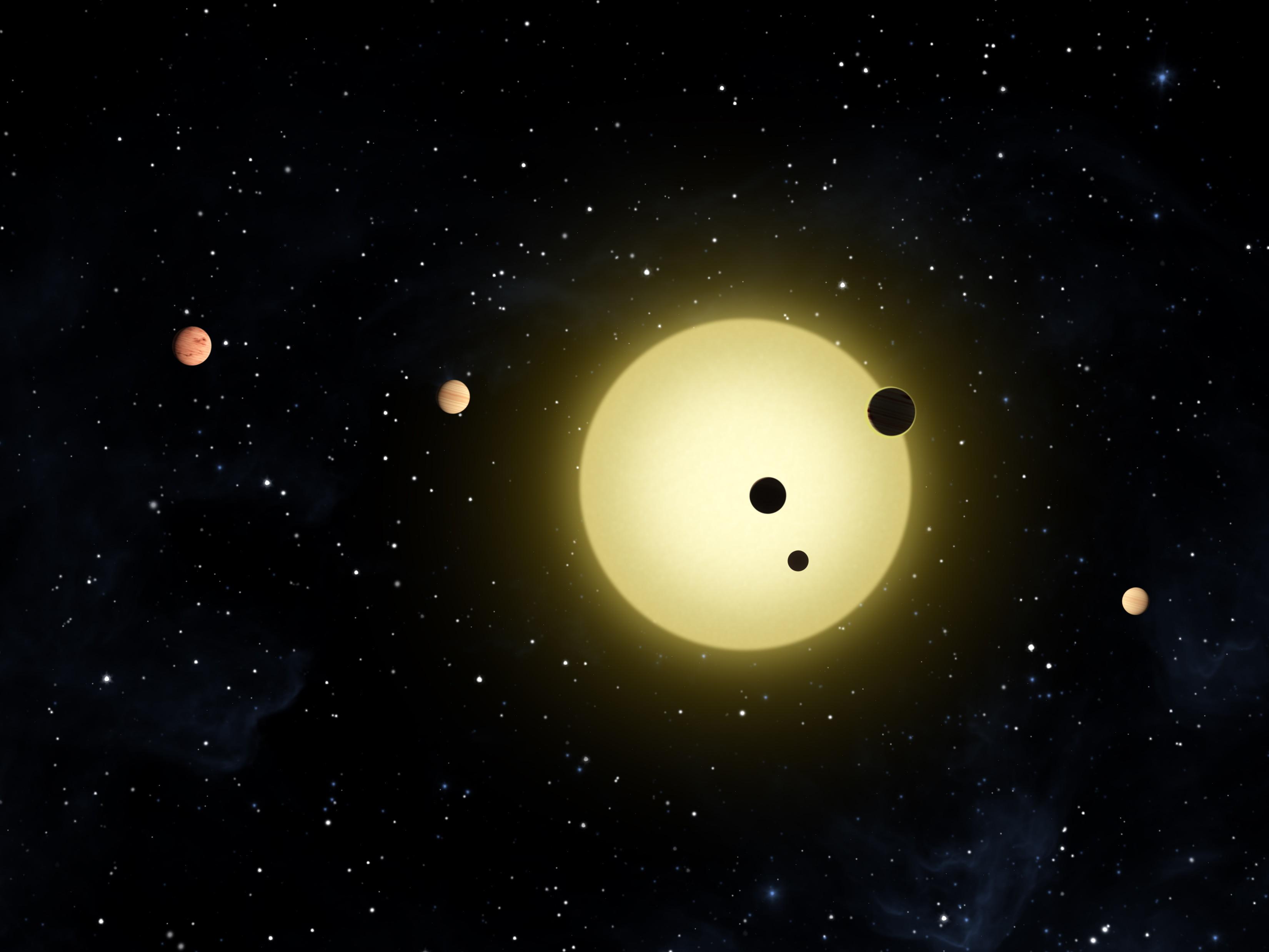
Welcome all to the first in our series on Exoplanet-hunting methods. Today we begin with the most popular and widely-used, known as the Transit Method (aka. Transit Photometry).
For centuries, astronomers have speculated about the existence of planets beyond our Solar System. After all, with between 100 and 400 billion stars in the Milky Way Galaxy alone, it seemed unlikely that ours was the only one to have a system of planets. But it has only been within the past few decades that astronomers have confirmed the existence of extra-solar planets (aka. exoplanets).
Astronomers use various methods to confirm the existence of exoplanets, most of which are indirect in nature. Of these, the most widely-used and effective to date has been Transit Photometry, a method that measures the light curve of distant stars for periodic dips in brightness. These are the result of exoplanets passing in front of the star (i.e. transiting) relative to the observer.
Description:
These changes in brightness are characterized by very small dips and for fixed periods of time, usually in the vicinity of 1/10,000th of the star’s overall brightness and only for a matter of hours. These changes are also periodic, causing the same dips in brightness each time and for the same amount of time. Based on the extent to which stars dim, astronomers are also able to obtain vital information about exoplanets.
For all of these reasons, Transit Photometry is considered a very robust and reliable method of exoplanet detection. Of the 3,526 extra-solar planets that have been confirmed to date, the transit method has accounted for 2,771 discoveries – which is more than all the other methods combined.
Advantages:
One of the greatest advantages of Transit Photometry is the way it can provide accurate constraints on the size of detected planets. Obviously, this is based on the extent to which a star’s light curve changes as a result of a transit. Whereas a small planet will cause a subtle change in brightness, a larger planet will cause a more noticeable change.
When combined with the Radial Velocity method (which can determine the planet’s mass) one can determine the density of the planet. From this, astronomers are able to assess a planet’s physical structure and composition – i.e. determining if it is a gas giant or rocky planet. The planets that have been studied using both of these methods are by far the best-characterized of all known exoplanets.
In addition to revealing the diameter of planets, Transit Photometry can allow for a planet’s atmosphere to be investigated through spectroscopy. As light from the star passes through the planet’s atmosphere, the resulting spectra can be analyzed to determine what elements are present, thus providing clues as to the chemical composition of the atmosphere.
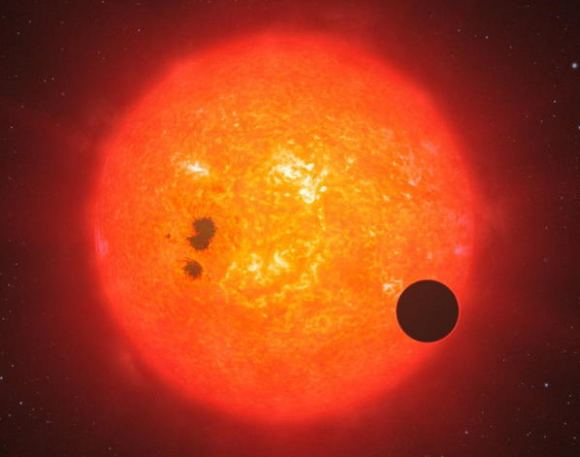
Last, but not least, the transit method can also reveal things about a planet’s temperature and radiation based on secondary eclipses (when the planet passes behind it’s sun). On this occasion, astronomers measure the star’s photometric intensity and then subtract it from measurements of the star’s intensity before the secondary eclipse. This allows for measurements of the planet’s temperature and can even determine the presence of clouds formations in the planet’s atmosphere.
Disadvantages:
Transit Photometry also suffers from a few major drawbacks. For one, planetary transits are observable only when the planet’s orbit happens to be perfectly aligned with the astronomers’ line of sight. The probability of a planet’s orbit coinciding with an observer’s vantage point is equivalent to the ratio of the diameter of the star to the diameter of the orbit.
Only about 10% of planets with short orbital periods experience such an alignment, and this decreases for planets with longer orbital periods. As a result, this method cannot guarantee that a particular star being observed does indeed host any planets. For this reason, the transit method is most effective when surveying thousands or hundreds of thousands of stars at a time.
It also suffers from a substantial rate of false positives; in some cases, as high as 40% in single-planet systems (based on a 2012 study of the Kepler mission). This necessitates that follow-up observations be conducted, often relying on another method. However, the rate of false positives drops off for stars where multiple candidates have been detected.
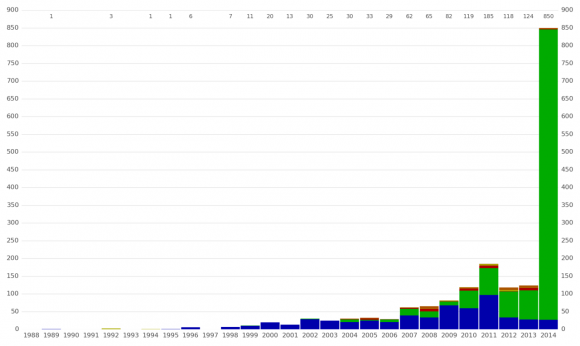
While transits can reveal much about a planet’s diameter, they cannot place accurate constraints on a planet’s mass. For this, the Radial Velocity method (as noted earlier) is the most reliable, where astronomers look for signs of “wobble” in a star’s orbit to the measure the gravitational forces acting on them (which are caused by planets).
In short, the transit method has some limitations and is most effective when paired with other methods. Nevertheless, it remains the most widely-used means of “primary detection” – detecting candidates which are later confirmed using a different method – and is responsible for more exoplanet discoveries than all other methods combined.
Examples of Transit Photometry Surveys:
Transit Photometry is performed by multiple Earth-based and space-based observatories around the world. The majority, however, are Earth-based, and rely on existing telescopes combined with state-of-the-art photometers. Examples include the Super Wide Angle Search for Planets (SuperWASP) survey, an international exoplanet-hunting survey that relies on the Roque de los Muchachos Observatory and the South African Astronomical Observatory.
There’s also the Hungarian Automated Telescope Network (HATNet), which consists of six small, fully-automated telescopes and is maintained by the Harvard-Smithsonian Center for Astrophysics. The MEarth Project is another, a National Science Foundation-funded robotic observatory that combines the Fred Lawrence Whipple Observatory (FLWO) in Arizona with the Cerro Tololo Inter-American Observatory (CTIO) in Chile.
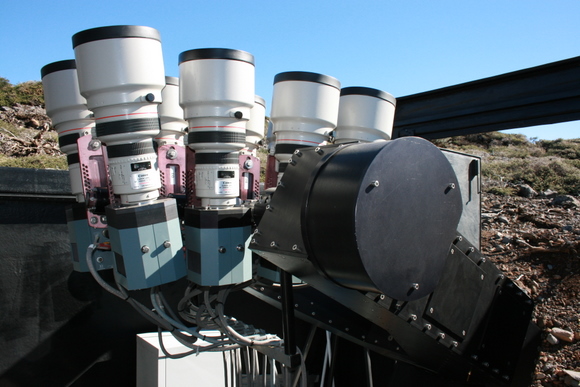
Then there’s the Kilodegree Extremely Little Telescope (KELT), an astronomical survey jointly administered by Ohio State University, Vanderbilt University, Lehigh University, and the South African Astronomical Society (SAAO). This survey consists of two telescopes, the Winer Observatory in southeastern Arizona and the Sutherland Astronomical Observation Station in South Africa.
In terms of space-based observatories, the most notable example is NASA’s Kepler Space Telescope. During its initial mission, which ran from 2009 to 2013, Kepler detected 4,496 planetary candidates and confirmed the existence of 2,337 exoplanets. In November of 2013, after the failure of two of its reaction wheels, the telescope began its K2 mission, during which time an additional 515 planets have been detected and 178 have been confirmed.
The Hubble Space Telescope also conducted transit surveys during its many years in orbit. For instance, the Sagittarius Window Eclipsing Extrasolar Planet Search (SWEEPS) – which took place in 2006 – consisted of Hubble observing 180,000 stars in the central bulge of the Milky Way Galaxy. This survey revealed the existence of 16 additional exoplanets.
Other examples include the ESA’s COnvection ROtation et Transits planétaires (COROT) – in English “Convection rotation and planetary transits” – which operated from 2006 to 2012. Then there’s the ESA’s Gaia mission, which launched in 2013 with the purpose of creating the largest 3D catalog ever made, consisting of over 1 billion astronomical objects.
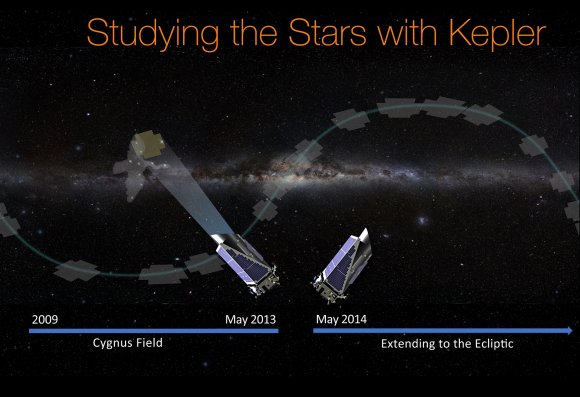
In March of 2018, the NASA Transiting Exoplanet Survey Satellite (TESS) is scheduled to be launched into orbit. Using the transit method, TESS will detect exoplanets and also select targets for further study by the James Webb Space Telescope (JSWT), which will be deployed in 2019. Between these two missions, the confirmation and characterization or many thousands of exoplanets is anticipated.
Thanks to improvements in terms of technology and methodology, exoplanet discovery has grown by leaps and bounds in recent years. With thousands of exoplanets confirmed, the focus has gradually shifted towards the characterizing of these planets to learn more about their atmospheres and conditions on their surface.
In the coming decades, thanks in part to the deployment of new missions, some very profound discoveries are expected to be made!
We have many interesting articles about exoplanet-hunting here at Universe Today. Here’s What are Extra Solar Planets?, What are Planetary Transits?, What is the Radial Velocity Method?, What is the Direct Imaging Method?, What is the Gravitational Microlensing Method?, and Kepler’s Universe: More Planets in our Galaxy than Stars.
Astronomy Cast also has some interesting episodes on the subject. Here’s Episode 364: The COROT Mission.
For more information, be sure to check out NASA’s page on Exoplanet Exploration, the Planetary Society’s page on Extrasolar Planets, and the NASA/Caltech Exoplanet Archive.
Sources:
Did We Arrive Early To The Universe’s Life Party?
The Fermi Paradox essentially states that given the age of the Universe, and the sheer number of stars in it, there really ought to be evidence of intelligent life out there. This argument is based in part on the fact that there is a large gap between the age of the Universe (13.8 billion years) and the age of our Solar System (4.5 billion years ago). Surely, in that intervening 9.3 billion years, life has had plenty of time to evolve in other star system!
Continue reading “Did We Arrive Early To The Universe’s Life Party?”


